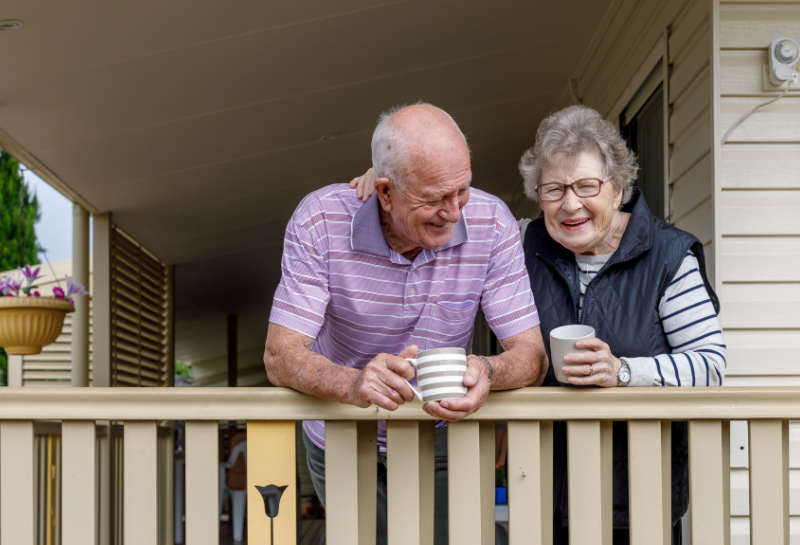Aging-in-Place Non-profits for Seniors and Their Families — The Basics Part I
Did you know that 10,000 people turn 65 daily in the U.S.? This trend will affect family caregivers, communities, and our society. In 2020-2021, 37.1 million family caregivers provided unpaid care to a family or non-family member age 65+. Aging-in-place organizations and their solutions are essential.
By 2030, all Baby Boomers will be aged 65+
Older adults 65+ are expected to represent 22% of the American population in 2040.
Today’s older Americans are healthier overall and living independently for longer. In 2022, the average 65-year-old is expected to live another 18.9 years.
The 2022 median income of older adults was $29,740.
Americans age 65+ (10.2% or 5.9 million people) lived below the official poverty line in 2022.
Americans are aging at an unprecedented rate, and aging-in-place non-profits like DSCC are and will continue to become more significant given the economic, healthcare, and financial strains on seniors and their families in the U.S. The need for aging-in-place organizations can’t be overstated, nor can the imperative to support and advocate for them.
Challenges for Seniors and the Role of Aging-in-Place Organizations
Seniors age in place for two reasons: they want to or must. For many, the cost of living in assisted living communities is prohibitive.
For example, the national monthly median (the middle value in a list of numbers) cost of assisted living in 2023 is $4,774. State and city costs vary. The monthly median cost of assisted living in Phoenix in 2023 is $4,217, while the monthly median cost in Washington, D.C., is $6,310.
While staying at home is more affordable and allows them to remain in familiar surroundings, aging in place can present challenges that affect their quality of life. Organizations like DSCC play a crucial role in mitigating the challenges by offering essential services that support seniors and their families:
1. Isolation and Loneliness
Challenge: Seniors often face isolation and isolation living at home due to decreased mobility and social connections.
✅ Solution: Aging-in-place organizations help by providing friendly calls, visits, and well-being checks to ensure regular social interactions and improve mental and emotional well-being.
2. Safety Concerns
Challenge: Home safety is a major issue for seniors living independently. Falls are the leading cause of injury for adults 65 and older in the U.S.
✅ Solution: Aging-in-place services provide home modifications, such as installing grab bars and ramps, to enhance safety and prevent accidents. In addition, regular check-ins ensure more protection for our seniors.
3. Difficulty Shopping and Cooking
Challenge: Many seniors need help with grocery shopping and meal preparation. Lacking the ability to get and cook can lead to malnutrition and chronic ailments.
✅ Solution: Organizations like DSCC provide programs like Meals on Wheels to deliver nutritious meals to seniors’ homes, ensuring they receive regular and balanced diets without the stress of shopping and cooking.
4. Health Issues
Challenge: Seniors are at higher risk of illnesses because of their age and the above mentioned reasons, and they can benefit from wellness education programs.
✅ Solution: DSCC and other aging-in-place organizations offer health and wellness education programs, teaching seniors how to manage their health, recognize symptoms, and maintain a healthy lifestyle.
5. Home Disrepair
Challenge: Aging homes can have disrepair issues that pose safety hazards. Again, falls are the number one cause of injury and death for seniors.
✅ Solution: Aging-in-place services like DSCC provide minor home repairs to address these problems, ensuring seniors live in a safe and well-maintained environment.
The solutions offered by aging-in-place organizations are vital in addressing seniors’ unique challenges, ensuring their safety, well-being, and ability to live independently. From home safety measures to providing regular social interaction, these non-profits play a pivotal role in seniors’ ability to age with dignity in their homes.
A Final Thought
Equally important is the support these organizations provide to caregivers facing challenges.
In Part II, we will explore how aging-in-place organizations like DSCC are essential in mitigating these challenges. Stay tuned to learn how these organizations also provide vital support to those caring for seniors and loved ones.
If you or someone you know could benefit from the services offered by DSCC or want to support our mission, please visit our website to learn more about our programs and how you can get involved.
Sources:
- JAMA, Social Isolation and Loneliness in Older Adults, May 2024
- Home Care Association of America, AARP Report on Family Caregivers Details Statistics, Issues, Promising Policies
- The Case for Meals on Wheels, An Evidence-based Solution to Senior Hunger and Isolation, September 2023
- CDC, Alzheimer’s Disease and Healthy Aging, Loneliness and Social Isolation Linked to Serious Health Conditions, April 2021
More Articles That Might Interest You
Aging in Crisis: The Challenges Seniors Face Staying at Home Without Help
Aging in Crisis: The Challenges Seniors Face Staying at Home Without Help As seniors face the desire [...]
This Giving Tuesday, Give with Purpose: Support Aging-in-Place Non-Profits
This Giving Tuesday, Give with Purpose: Support Aging-in-Place Non-Profits As purpose-driven corporate giving becomes a strategic priority, companies [...]
Honoring Family Caregivers: A Lifeline of Support in November and Beyond
Honoring Family Caregivers: A Lifeline of Support in November and Beyond November is National Family Caregivers Month, [...]










